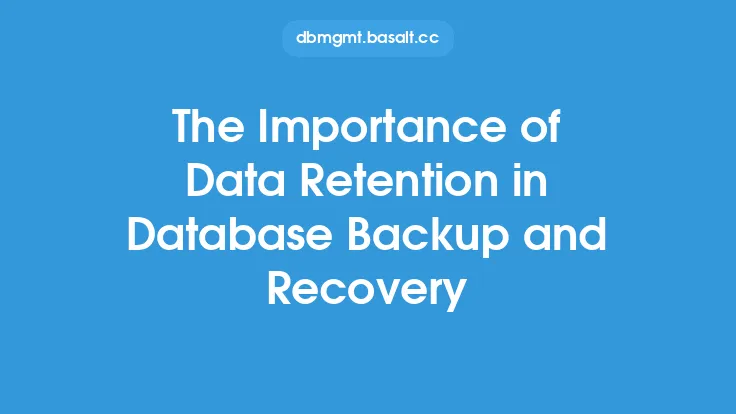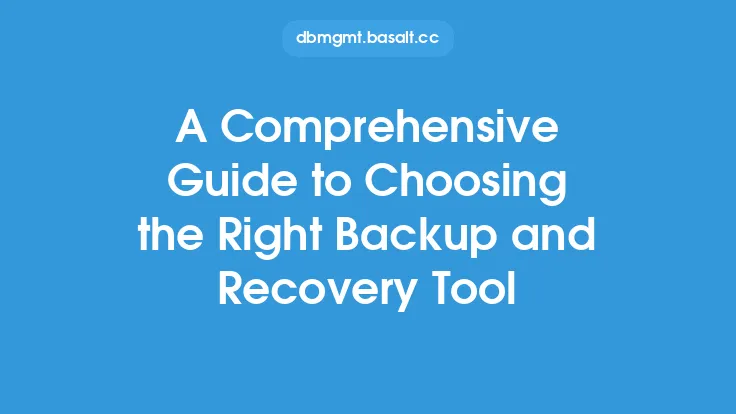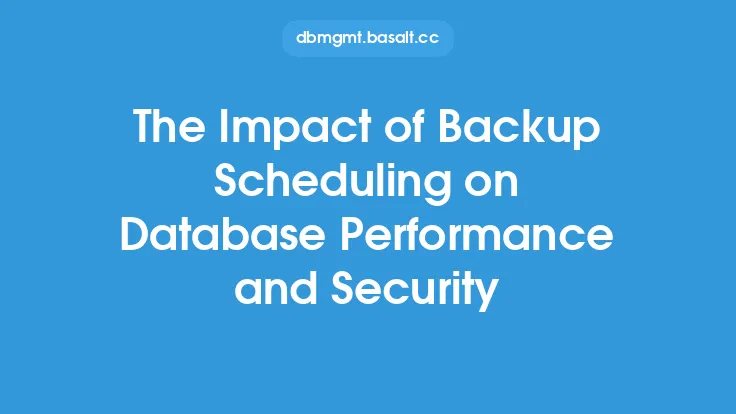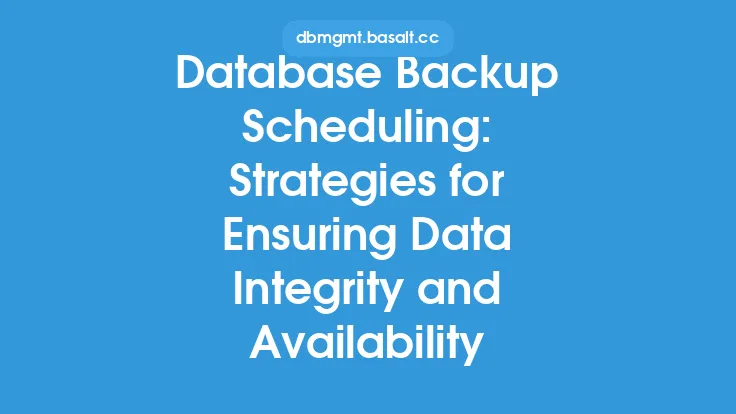Creating an effective database backup and retention strategy is crucial for any organization that relies on data to operate. A well-planned strategy ensures that data is protected, and the organization can recover quickly in the event of data loss or corruption. However, finding the right balance between backup frequency, retention period, and storage capacity can be challenging.
Understanding the Importance of Database Backup and Retention
Database backup and retention are two interconnected aspects of data protection. Backup refers to the process of creating copies of data, while retention refers to the length of time these copies are stored. A good balance between the two is essential to ensure that data is available when needed, without overwhelming storage resources. Organizations must consider the trade-offs between backup frequency, retention period, and storage capacity to develop a strategy that meets their specific needs.
Key Considerations for Database Backup and Retention
Several factors influence the development of a database backup and retention strategy. These include the type and volume of data, regulatory requirements, business continuity needs, and storage constraints. For instance, organizations that handle sensitive data, such as financial or personal information, may need to adhere to strict regulatory requirements regarding data retention. Similarly, businesses that rely heavily on data for daily operations may require more frequent backups to ensure minimal downtime in case of data loss.
Balancing Backup Frequency and Retention Period
The frequency of backups and the retention period are critical components of a database backup and retention strategy. More frequent backups provide better protection against data loss but increase storage requirements and may impact system performance. On the other hand, longer retention periods ensure that data is available for a longer time but also increase storage needs and costs. Organizations must balance these factors based on their specific requirements, such as the rate of data change, the importance of data, and the potential impact of data loss.
Storage Capacity and Management
Storage capacity is a significant consideration in database backup and retention. As data volumes grow, so does the need for storage. Organizations must manage their storage resources efficiently to ensure that they have enough capacity for backups without incurring excessive costs. This can involve implementing data compression, deduplication, and tiering strategies to optimize storage usage. Additionally, organizations should consider the type of storage media used for backups, such as disk, tape, or cloud storage, and ensure that it aligns with their recovery time objectives (RTOs) and recovery point objectives (RPOs).
Data Lifecycle Management
Data lifecycle management is an essential aspect of database backup and retention. It involves managing data throughout its lifecycle, from creation to deletion, to ensure that it is handled efficiently and in compliance with regulatory requirements. This includes classifying data based on its importance and retention requirements, implementing data retention policies, and ensuring that data is properly disposed of when it is no longer needed. By managing the data lifecycle effectively, organizations can reduce storage costs, minimize the risk of data breaches, and improve data availability.
Monitoring and Testing
Monitoring and testing are critical components of a database backup and retention strategy. Organizations should regularly monitor their backup processes to ensure that they are completing successfully and that data is being retained for the required period. They should also test their backups periodically to verify that data can be recovered correctly and that it is not corrupted. This helps identify any issues with the backup process and ensures that the organization can recover quickly in the event of data loss.
Conclusion
Finding the right balance between database backup and retention is essential for ensuring data protection and availability. Organizations must consider several factors, including backup frequency, retention period, storage capacity, and data lifecycle management, to develop a strategy that meets their specific needs. By understanding the importance of database backup and retention, balancing backup frequency and retention period, managing storage capacity, implementing data lifecycle management, and monitoring and testing backups, organizations can ensure that their data is protected and available when needed. This not only helps in complying with regulatory requirements but also in maintaining business continuity and minimizing the risk of data loss.





